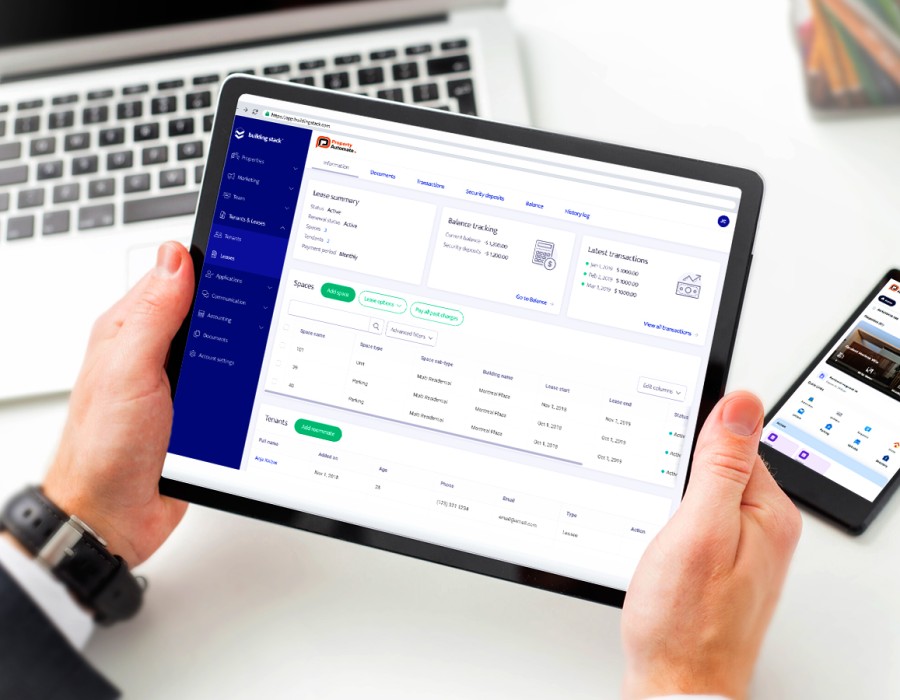Managing tenant relations can be a complex and time-consuming task for property managers, landlords, and real estate professionals. With the growing demands of modern property management, relying on traditional methods like spreadsheets and manual record-keeping can lead to inefficiencies, miscommunication, and strained tenant relationships. Enter lease management software —a digital solution that streamlines and simplifies the entire lease management process, making it easier to maintain positive tenant relations. In this article, we'll explore how lease management software can transform the way you manage your properties and enhance your tenant relationships.
1. Centralized Information and Communication
One of the most significant benefits of lease management software is its ability to centralize all tenant-related information in one easily accessible location. From lease agreements and payment records to maintenance requests and communication logs, everything is stored in a secure, digital environment. This centralization ensures that both property managers and tenants have access to up-to-date information, reducing the likelihood of miscommunication and misunderstandings.
Tenants can log into a dedicated portal to view their lease details, make payments, submit maintenance requests, and communicate with property management—all in one place. This level of transparency fosters trust and improves the overall tenant experience.
2. Automated Rent Collection and Reminders
Late rent payments can strain tenant relations and disrupt cash flow for property owners. Lease management software automates rent collection by allowing tenants to set up recurring payments, receive automated reminders, and even make payments through various digital channels. This automation not only reduces the administrative burden on property managers but also makes it easier for tenants to stay on top of their financial obligations.
With timely reminders and multiple payment options, tenants are less likely to miss payments, leading to fewer disputes and a more positive relationship between tenants and landlords.
3. Streamlined Maintenance Management
Maintenance issues are a common source of tension between tenants and property managers. Lease management software simplifies the process by providing a streamlined platform for tenants to submit maintenance requests and for property managers to track and address those requests efficiently.
Tenants can quickly log issues through the software, and property managers receive instant notifications, allowing them to prioritize and respond to requests promptly. The software also enables property managers to schedule repairs, communicate with contractors, and update tenants on the status of their requests, ensuring that issues are resolved quickly and transparently.
4. Improved Lease Management and Renewals
Managing lease agreements manually can be cumbersome and prone to errors. Lease management software automates the entire lease lifecycle, from creation and signing to renewals and terminations.
With the software, property managers can create and customize lease agreements using pre-built templates, send them for electronic signatures, and store them securely in the system. As lease expiration dates approach, the software sends automated reminders to both property managers and tenants, allowing for timely renewal discussions. This proactive approach helps maintain continuity in tenant occupancy and reduces the risk of vacancies.
5. Enhanced Reporting and Analytics
Understanding tenant behavior and property performance is crucial for maintaining healthy tenant relations. Lease management software provides advanced reporting and analytics features that give property managers valuable insights into rent payment patterns, maintenance requests, occupancy rates, and more.
These insights enable property managers to identify trends, address potential issues before they escalate, and make informed decisions to improve tenant satisfaction. For example, if the software reveals a high volume of maintenance requests in a particular property, property managers can investigate the underlying causes and take corrective actions to prevent future issues.
6. Legal Compliance and Risk Management
Navigating the complexities of lease agreements and tenant laws can be challenging, especially for property managers handling multiple properties. Lease management software helps ensure compliance with local and national regulations by providing legally compliant lease templates, tracking critical dates (such as lease expiration and rent review dates), and maintaining accurate records of tenant interactions.
By reducing the risk of legal disputes and ensuring that all lease agreements are up-to-date and compliant, lease management software protects both property managers and tenants, contributing to a more harmonious relationship.
Conclusion
In today's fast-paced real estate market, maintaining positive tenant relations is essential for the long-term success of any property management business. Lease management software offers a comprehensive solution that simplifies tenant interactions, automates routine tasks, and provides valuable insights into property performance. By leveraging this technology, property managers can enhance their tenant relationships, reduce administrative burdens, and ultimately create a more efficient and harmonious rental experience for all parties involved.
Investing in lease management software is not just a way to streamline operations; it's a strategic move that can lead to happier tenants, lower turnover rates, and a more successful property management business. If you're looking to simplify your tenant relations and take your property management to the next level, now is the time to explore the benefits of lease management software.





Comments